Ethiopian wedding traditions have been around for so many years, unrivaled in their wealth of tradition, familial affection, and historical passages from the imperial reign until today, varying only in tone. Ethiopia’s wedding tradition is unique and varied. There are many different customs and rituals associated with the ceremony, and they depend largely on the region and culture of each family. The ceremonies may occur before, during, and after the wedding day. Although we can’t discuss them all here, some of the more prominent traditions will be highlighted in this article. Below is your step-by-step guide to the Ethiopian wedding!
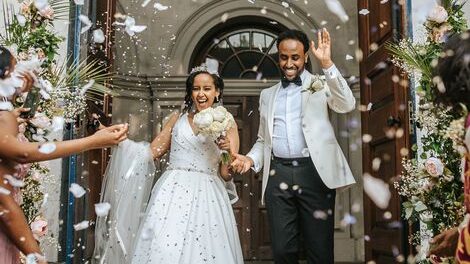
1) Shimglena (Send older men to the bride family house)
Shimgelena is the very first step in the entirety of wedding processions. It is held out as such. On one sunny weekend, chosen men, elderly or young /shimagle/ from the groom’s side of the family will head to the bride’s home and ask for their daughter’s hand in marriage.
The men sent will praise the groom and evaluate everything he had ever done, including tiny details like how he began speaking at a very young age when his age-mates were just goo-goo-ing to how he turned into such an aspiring young man worthy of their daughter. They will list everything to his name; cars, houses, money, stock shares, and even bonds.
Suppose the bride’s family wants the man and thinks of him as fitting for their daughter. In that case, they will give out their answers and say, “We agree to the bond” if they don’t want the marriage or are even a bit hesitant about the union, they will ask for another session of shimglena only to end up saying no. Depending on the answer, the food will be served but can only be enjoyed if the response is positive.
2) Telosh
Telosh is the second step in the Ethiopian wedding assemblage. Telosh is a bridal shower but more traditional and less pompous. This event is held two days before the main wedding ceremony. Like the shimglena the hosts are the bride’s household. This is where the bride is showered with lots of gifts from the groom’s family and all the guests attending.
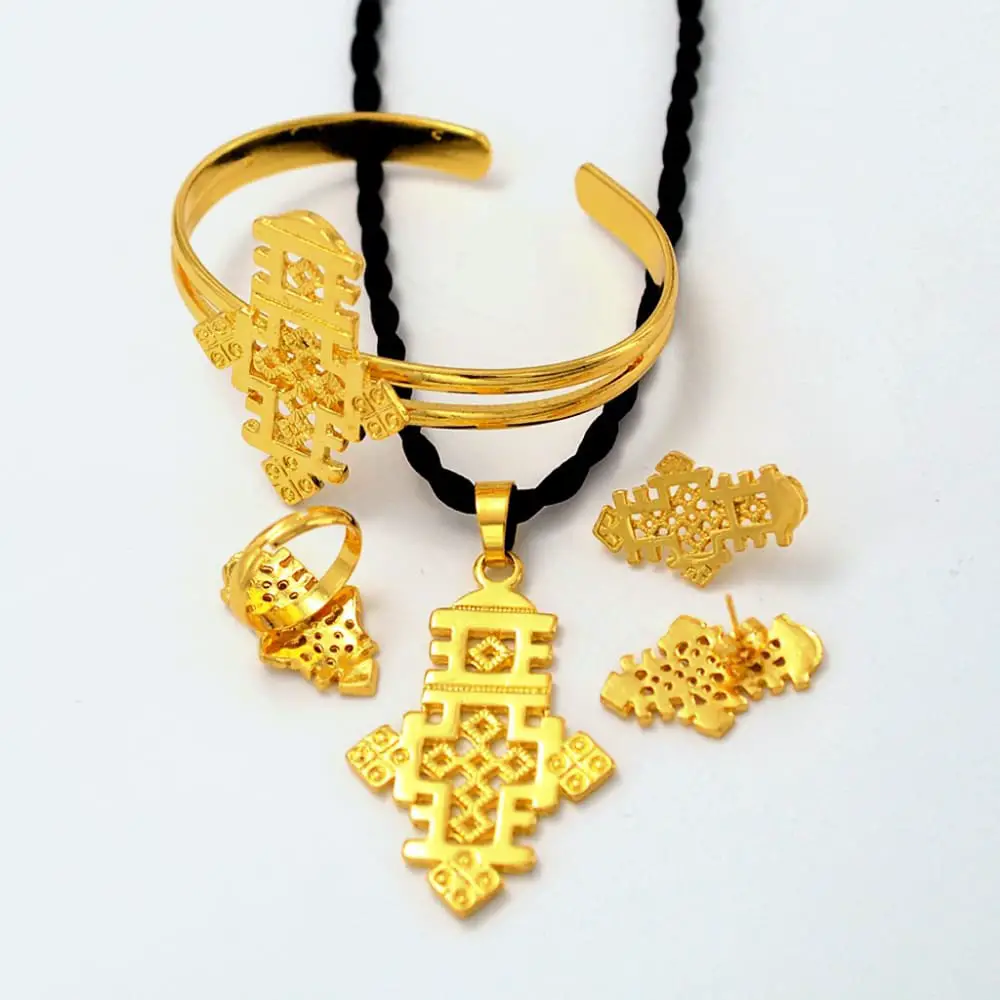
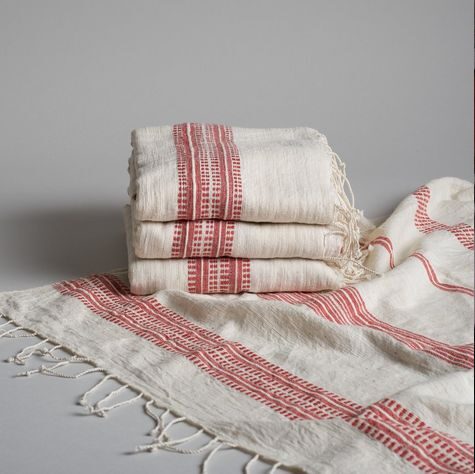
Everyone will clap and applaud as the endowments start flooding in. The bride will be; a traditionally adorned Gabi, hand-made bed mattress, a wedding gown, thousands of birr worth of jewelry richer than she was just a day ago.
3) Bridal Preparations
The bride and her bridesmaids usually get together for a day of beauty treatments and dress fittings before the wedding. She receives beauty treatments, has her hair and make-up done, and picks out the perfect bridal gown. On the day of the wedding, her bridesmaids help her dress and make sure she is ready to walk down the aisle.
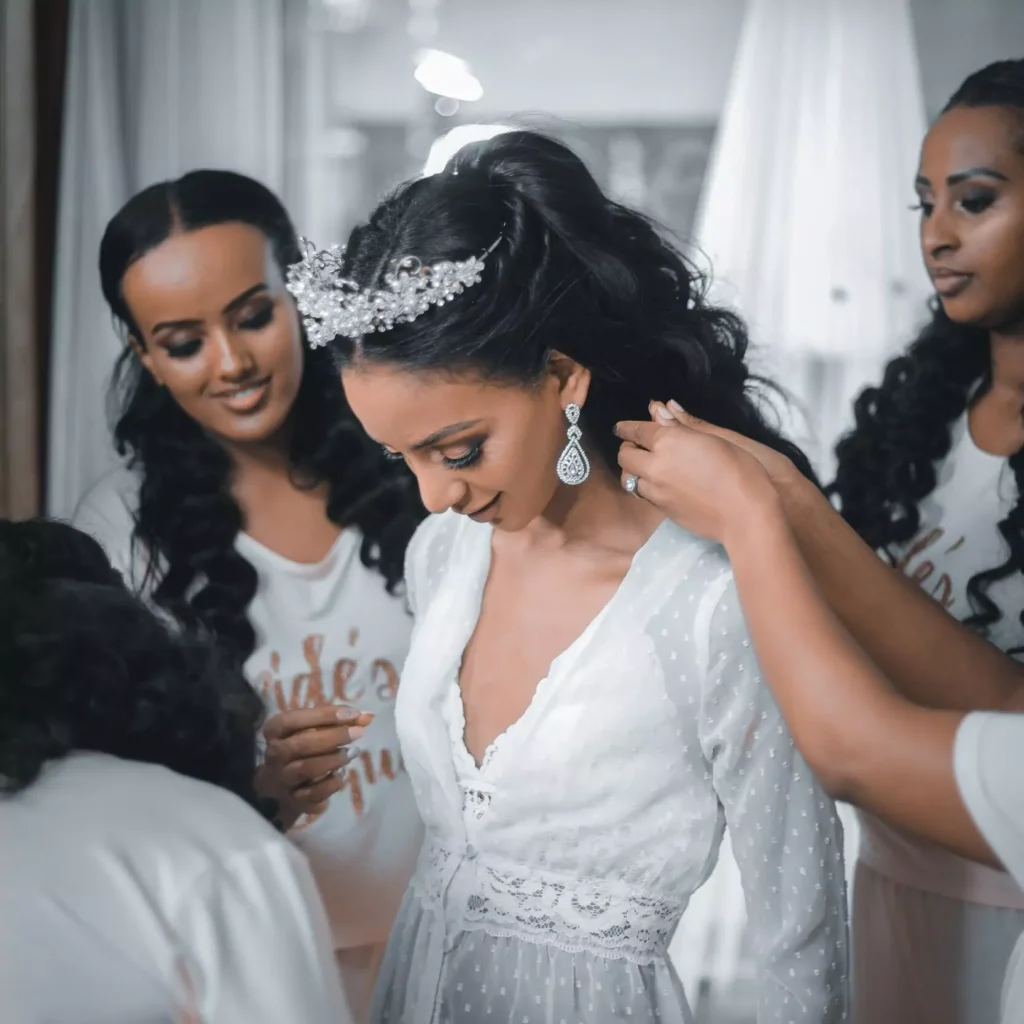
Her groom is just as busy preparing for the wedding. He finds a suitable outfit, chooses the right accessories, and makes sure he is groomed and ready to take his place at the altar. His best man stands with him, offering support and ensuring that the groom is fully prepared to become married.
4) Groom’s entrance
Groom’s entrance is by far the best part of Ethiopian weddings. It is held on the wedding day itself, where the groom heads to the bride’s house early in the morning after hours worth of preparation in his house with his friends and families.

After he is done grooming himself for the big day, he will go to his bride’s house. Upon his arrival, everyone from the bride’s side will go out to the front door and hold it close with all the power within them. In doing so, they will prevent the groom from coming inside singing the traditional song ‘anasgebam sergegna edej yetegna’ (English Translation: we will not allow the groom to enter the house) while those on the other side push the door in an attempt to open it and take the bride.
The playful quid pro quo will proceed for minutes, the songs being played from both sides till eventually, the door falls open, and the groom walks inside with the brightest grin on his face because that is one obstacle down in a lifetime full of them.
Here is the video of the actual event.
As reparation for the struggles bared, he will walk to his bride, lift the veils that embellish her face, and gift her with a kiss on her forehead and the bouquet she will be carrying for the entire wedding processions. Hand in hand, family, and friends behind them, the wedding band playing its best song as of yet they will walk out of the house and on to the waiting vehicles to the next stage of the jubilant festivities.

5) Cute sceneries and photo programs
Any Ethiopian knows the worth of wedding photos and the importance we have attached to them as a society. So they begin as early as the earliest, a separate car will be prepared for the man in charge and his teammates. So on the way there, the video man will peek his head out of the window along with his gears risking his/her life to record each move the vehicles carrying the groom and bride to be made.
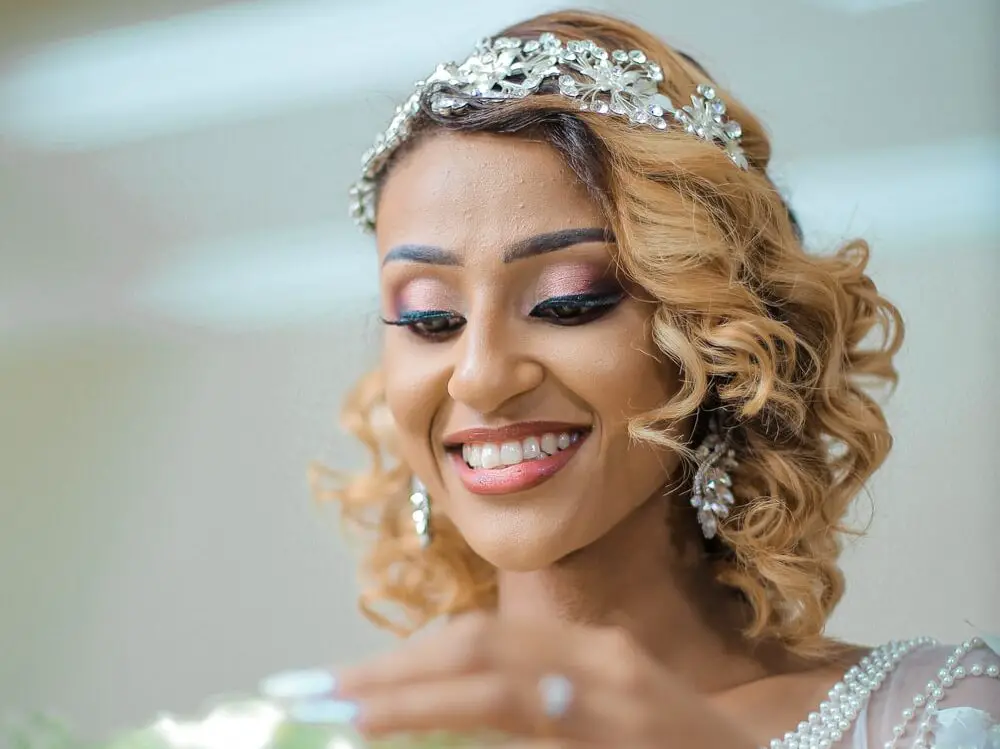
Everyone involved in the celebration will start honking their car horns and clicking their tongues against the upper part of the inside of their mouth in elelta at the end of every chorus sung. Any passer-by who sees the decorated cars or hears their noise from a mile away will stand on the sidelines and wish them good while waving to the camera in a subtle, Ethiopian manner!
When the car stops at its destination of the said cute sceneries, everyone will get off the car and head to the chosen space. The bride and Groom will start posing for the camera, switching motions at the sound every click of cry the camera makes. Everyone and everything will get photographed and turned into an eternal memory in the form of paper before everyone again climbs back into their cars to head to the next step of the Ethiopian wedding event.
6) Blessing of the elders
So far, it has been fun, but this part of weddings doesn’t end without tears being splashed here and there. This is where emotions come out, and reality settles. You are old enough to start a life of your own away from your parents’ helping hands.
At this stage, the groom and bride will bow down to those who have raised and nurtured them and kiss their knees in respect while the elders shower them with blessings and well regards.
The groom and bride-to-be will say their gratitude, accepting the good wishes of the elders before heading into the main hall of the main event, THE WEDDING, yes finally!!!
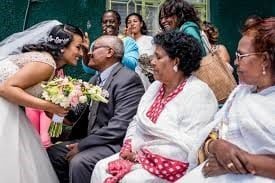
7) Ethiopian lunch buffet
You thought that would be it didn’t you? Well, it is not! There is still one more thing to do before they officially tie the knot. And it is a lunch buffet. A lunch buffet is one of the most exhilarating foods in Ethiopian traditions.
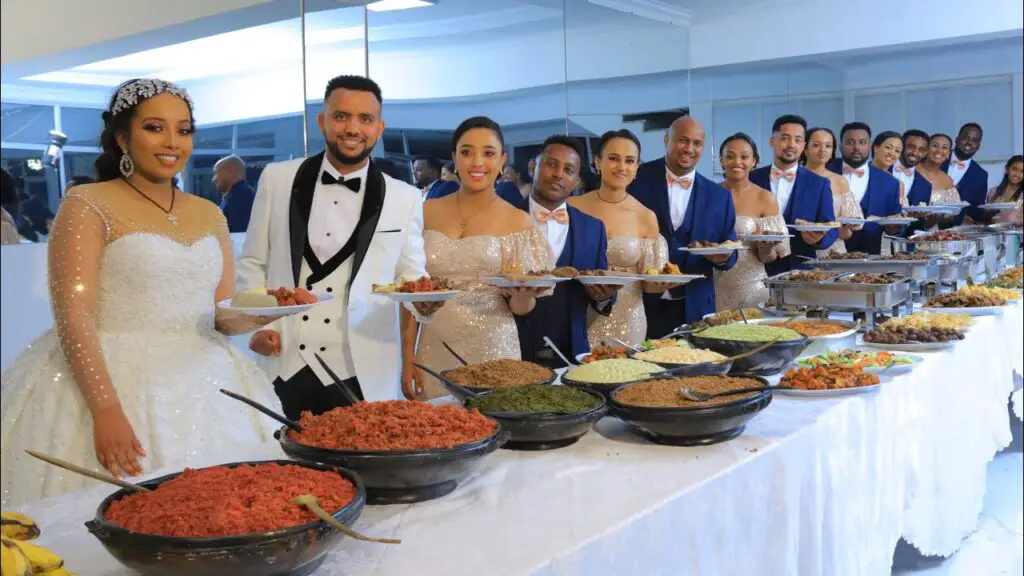
As the wedding couples enter the hall, they will have flower girls lighting up their paths with the petals they delicately throw and candle girls in the same manner. Groomsmen and bridesmaids lead with great music while family and friends follow behind.
After the greetings are done, they take their seats on the uniquely built seats of honor and smile down at their guests. Sometime later, the religious father or the priest will invite everyone to stand up and pray. Soon after everything is blessed, the lunching starts with the bride and Groom. They are the first to be served. Parents from both sides will make it a task to move around the hall, inviting and encouraging their guests to dine freely.
8) Finally, the engagement!
Yes, after the breathtaking day we had, it is time to seal things into place with a wedding band and lots of applause. The people being celebrated will be a fiancee and wife/husband on the same day in hours because here in Ethiopia, both the engagement and the wedding just so happens to be on the same day.
Rings will be exchanged, vows will be stated, and the newlyweds will cut the cake, then everyone in the audience will cheer, not just for the cake but because the cutting is considered the first task they did as newlyweds.
Next up is their first dance. Despite who we are as a society, a slow song will be opened, and the newlyweds will start swaying their bodies to it while the rest of the audience count each second the song ends and the REAL SONG begins.
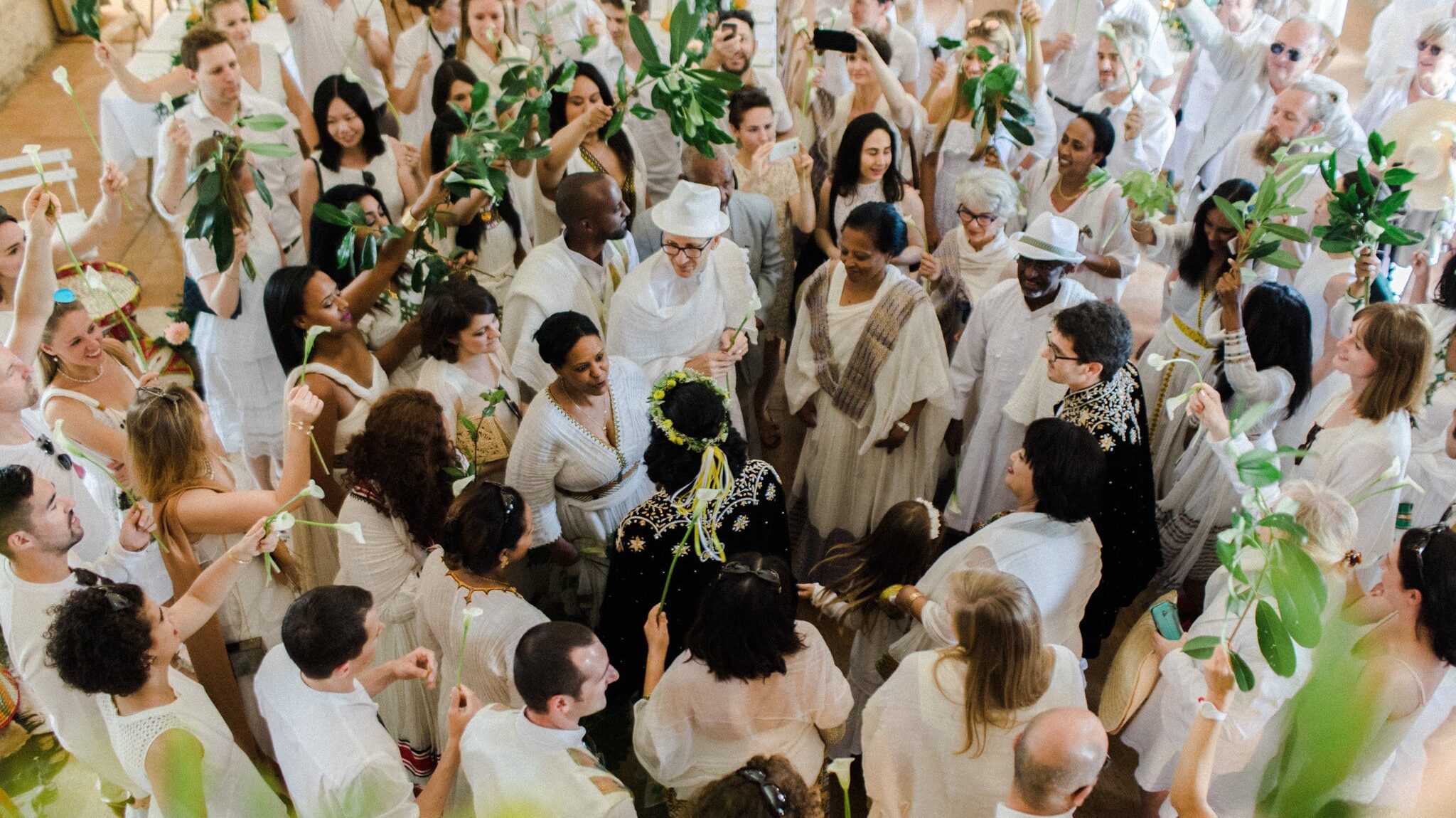
Chese abuaraw chese __ chese abuaraw chese!!! We will sing, bending and twisting our bodies till we are bound to feel the aftermath for a week!
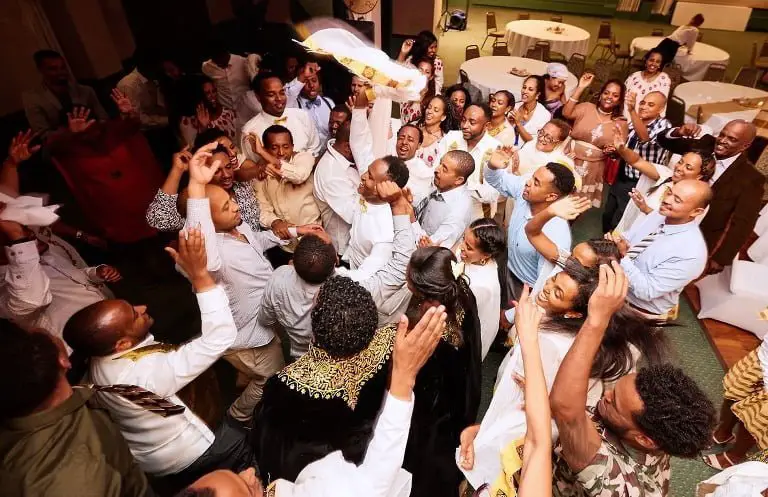
Characteristically, we will dance till we sweat and drop dead on the dance floor, but that doesn’t mean the fun stops there, not till the bride and Groom are being thrown off onto the air by their loved ones. Not till the long-awaited dance trial between the groomsmen and bridesmaid takes place. Everyone on the “team” will test their fates by moving their bodies to the wedding rhythms. There won’t be any losers or winners if our fun is guaranteed. Which it indeed is!
9) Felicitations from loved ones
This is a traditional Ethiopian wedding; everyone takes part, even those in foreign lands who couldn’t come to the wedding physically.
This part of a wedding is where the music stops, and the DJs start listing every congratulatory message from worldwide. Those who couldn’t join in on the fun for reasons of their own but still wish the newlyweds happiness and success in the new chapter they have begun!
10) Dinner!!!
If you thought now that you’re married, you could go off your way; YOU ARE SO WRONG!!!
You might think dinner with the parents isn’t the right way to commemorate the first night of your wedding, but that is a matter of opinion. The groom’s parents will host a small family-only dinner at this stage.
Everyone will sit around a table and devour their food while talking about the day’s events. Starting from how your uncle made a spectacle out of himself on the dance floor to how your little sister was flirting with the cameraman.
11) Melse…
As culture dictates, the Ethiopian wedding doesn’t end when the knot is tied, and they are named husband and wife. It goes on for days after in the following form, Melse.
This stage of Ethiopian weddings is held one to three days after the primary wedding day. When a marriage is typically celebrated on a Sunday, it places the Melse on a Tuesday or a Thursday. But sometimes, the day both sides agree on will be the Melse date.
As the name prescribes, on this day, the groom returns the bride to her parents’ house if only for a short while, hence, Melse. The newlyweds will wear a traditional Ethiopian cloth called Kaaba, typically made of a heavy quilted velvet with the final touches of the telf.
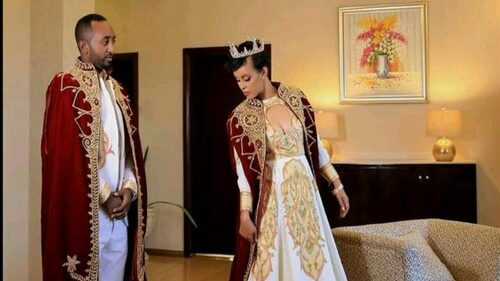
Close family and friends, a relatively more minor guest will attend the ceremony. The ceremony is the bride cutting a Difo Dabo or bread and her mother-in-law or the groom’s mother giving her nicknames or ye Dabo sem to show how much she is valued in the household.
The nicknames range from funny to awe-worthy showing the mother’s level of creativity and kind heart. It will also be used to remember the day and the memories lived up.
12) Kelekel
Now, Kelekel is considered a redo of the main Ethiopian wedding itself. Early in the morning, the bride and Groom will call their troops of bridesmaids and groomsmen, hunt for a big sheep, and head to the bride’s parents’ house, sometimes the groom’s.
Again following the bidding of the name, Kelekel /gathering/ each side of the families will call their relatives and friends for a meet and greet. Everyone who couldn’t attend the formal wedding will find a way to come to this ceremony.
Everyone will be introduced to everyone while dining on the sheep that was hunted for earlier that day. As the tradition commands, the elders will bless everyone and drop subtle hints about who will be next in line. The Ethiopian wedding will be finalized in such a rhapsodic state of jubilation till we meet again on another occasion!
Watch the video for Ethiopian wedding dances.
13) Chagula (Honeymoon)
Ethiopian couples will finally have time to unwind and celebrate their union after the stressful wedding day and the lengthy ceremony. They will celebrate their new life together by going on a traditional wedding honeymoon or embarking on a modern honeymoon to places that suit their individual preferences.
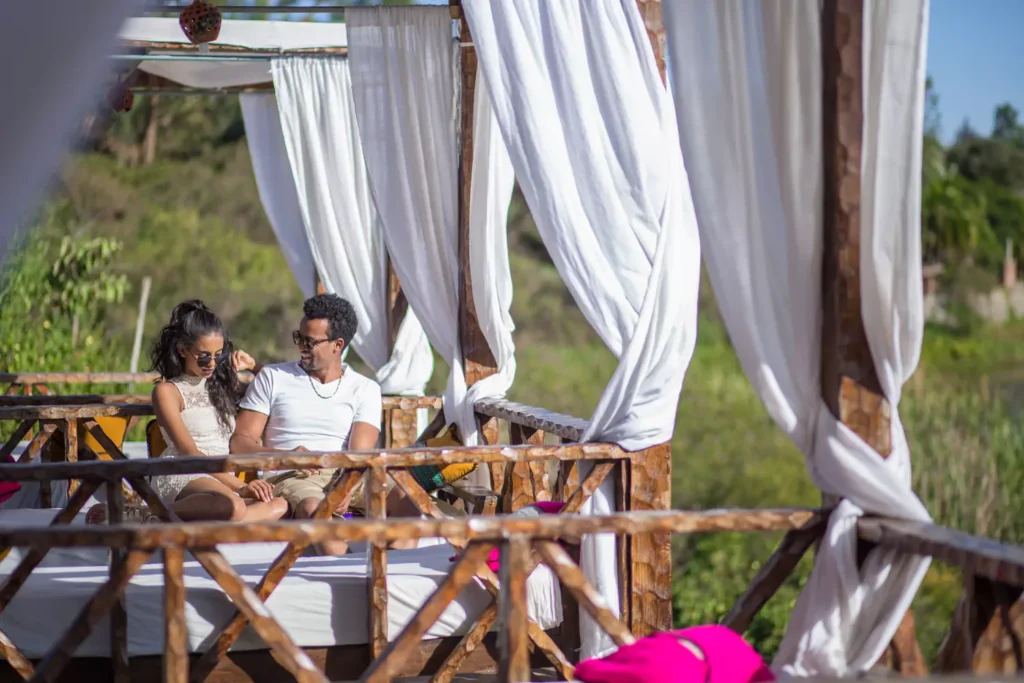
According to some Ethiopian marriage customs, the couple must spend one to three weeks of their honeymoon at the home of the groom’s parents. However, some will opt for the more contemporary honeymoon option of taking a vacation together, either abroad or in Ethiopia, to enjoy a romantic getaway. Since Ethiopia is one of the leading honeymoon destinations across the continent, many couples have the luxury of spending their first days as a married couple at luxurious Ethiopian resorts and hotels.
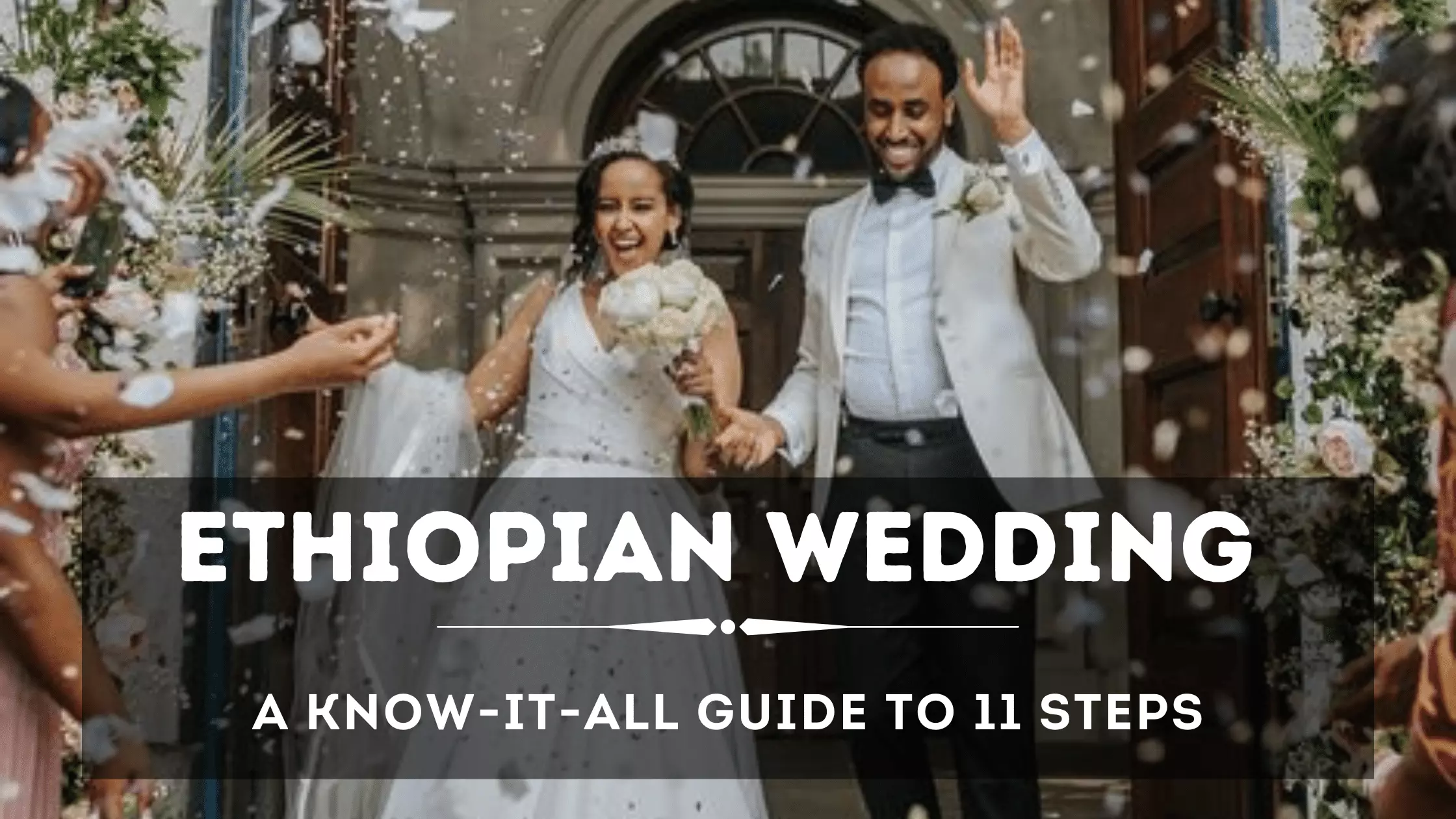
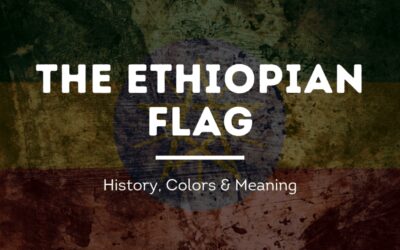
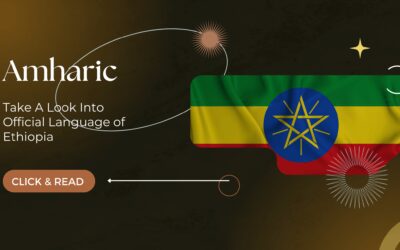

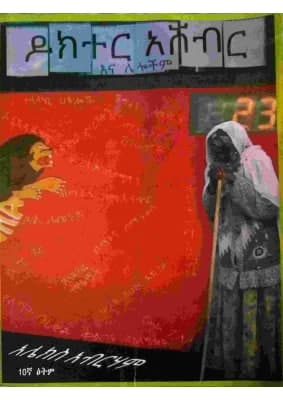
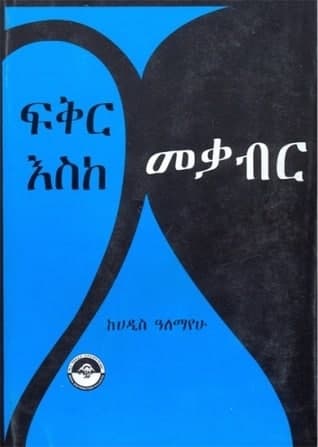
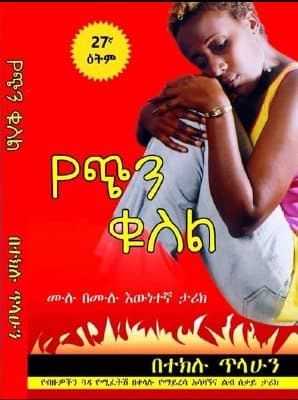
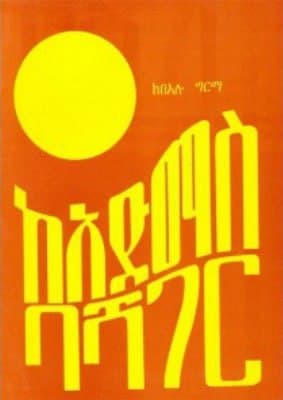
0 Comments
Trackbacks/Pingbacks